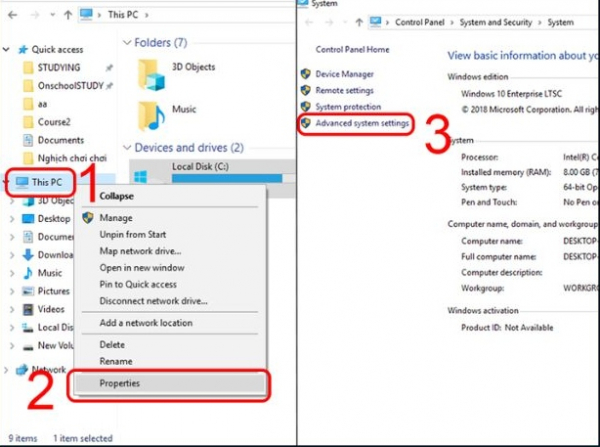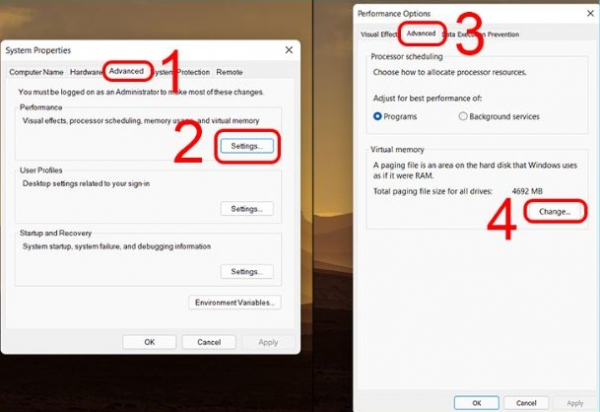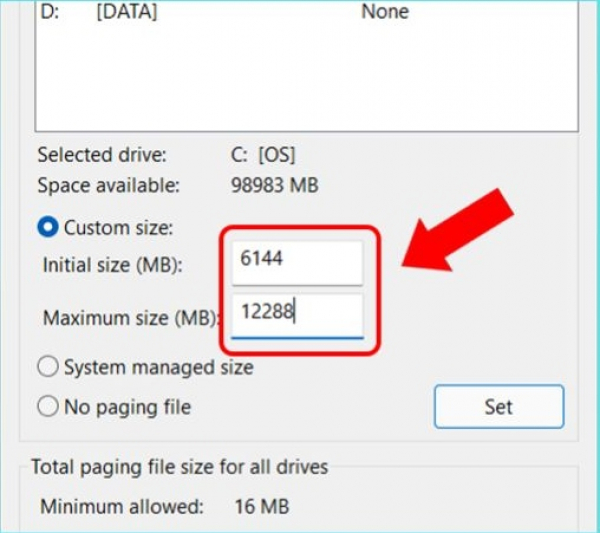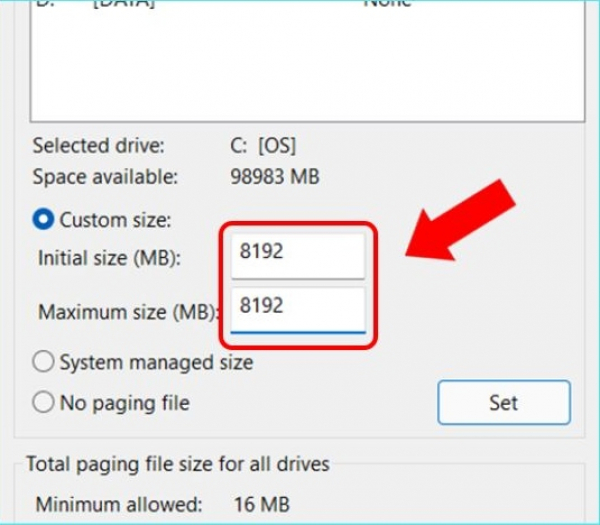How to increase virtual memory in Windows 10
For laptops that frequently experience stuttering or lag, users can address the issue by creating virtual RAM for the device. This will help the computer run more smoothly. Do you know what virtual RAM is and how to set it up in Windows 10? Let's explore this with Gpwebmedia.net in the article below.
1. What is Virtual RAM?
Virtual RAM (Virtual Memory) is a small portion of space on the hard drive used as if it were physical RAM. When your computer needs to run heavy applications and the real RAM is exhausted, virtual RAM steps in to support the process, making the application run more smoothly. This means that a small portion of the hard drive space is used as virtual RAM, but don't worry. You can decide how much space to allocate for virtual RAM, depending on your personal computer usage needs.
2. Why do you need to set up Virtual RAM on Windows 10?
There are several reasons why you might need to set up Virtual RAM on Windows 10, including:
If you frequently work with graphic software or play heavy games but don't have enough physical RAM to ensure performance, you can increase virtual RAM for your computer to help it handle the load. However, this is only a temporary measure, as virtual RAM cannot compare to real RAM.
When the real RAM is overloaded, the computer will transfer the temporary memory of the least used open applications to virtual RAM, freeing up memory for the applications you need. When you return to using those applications, virtual RAM will swap the temporary memory back into the real RAM.
This process continues until you close some applications, allowing the real RAM to have enough space to handle your tasks.
3. Detailed Steps to Set Up Virtual RAM in Windows 10
If you want to set up virtual RAM in Windows 10 and don't know how, you can follow these steps:
Step 1: Right-click on the This PC icon on the desktop and select Properties. Next, from the left menu, select Advanced system settings.

Step 2: In the new window that opens, select the Advanced tab and then select Settings in the Performance section. Next, click the Advanced tab again and select Change.

Step 3: To proceed, uncheck the box for Automatically manage paging file size for all drives, then select Custom size.

Then, enter the values according to the instructions below, depending on whether you are using a Windows 10 32-bit computer with less than 3 GB of RAM or a Windows 10 64-bit computer with less than 4.5 GB of RAM:
- Initial size: Enter a value 1.5 times the amount of RAM your computer has.
- Maximum size: Enter a value 3 times the amount of RAM your computer has.
The example below illustrates a computer with 4 GB of RAM, equivalent to 4096 MB.

If you are using a Windows 10 32-bit computer with more than 3 GB of RAM or a Windows 10 64-bit computer with more than 4.5 GB of RAM, follow these steps:
- Initial size: Enter a value equal to half the amount of RAM your computer has.
- Maximum size: Enter a value equal to half the amount of RAM your computer has.
The example below illustrates a computer with 16 GB of RAM, equivalent to 16384 MB.

Therefore, if you have 32GB of RAM, you should set the virtual memory from 16GB to 48GB.
Step 4: After entering the values as instructed above, click Set, then select OK. Finally, restart your computer to complete the process of creating virtual RAM.
4. Does setting up Virtual RAM in Windows 10 harm your computer?
You now know how to set up virtual RAM in Windows 10 but might wonder if it harms your computer. The answer is no, as long as you consider virtual RAM a temporary solution. Virtual RAM is a method to increase the RAM capacity of your computer by using a portion of the hard drive. This is useful when you need to run heavy applications or software that your real RAM cannot handle. However, you should not overuse virtual RAM, as it can affect the performance and lifespan of your hard drive. If you frequently need to use virtual RAM for work or entertainment, consider upgrading the RAM of your computer to avoid unnecessary risks. Replacing a hard drive is much more expensive than buying additional RAM.
